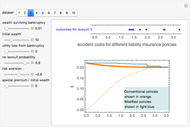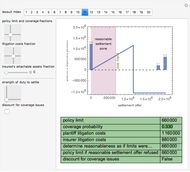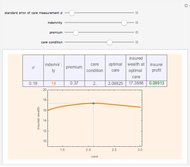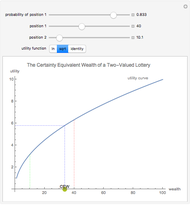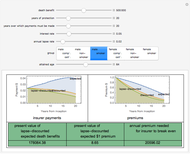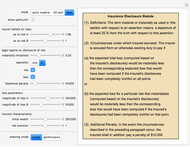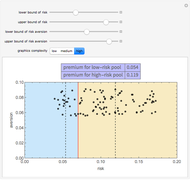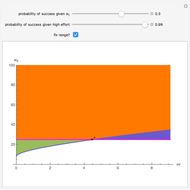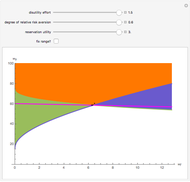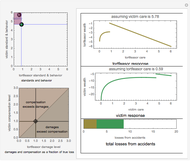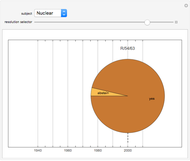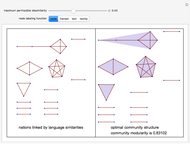The Efficient Dual-Limit Liability Insurance Contract

Requires a Wolfram Notebook System
Interact on desktop, mobile and cloud with the free Wolfram Player or other Wolfram Language products.
Conventional liability insurance typically applies a single per occurrence limit to a given set of verbally described lawsuits against the insured. This Demonstration explores the circumstances under which the insured would prefer to divide the set of lawsuits that might be brought against it into two categories (A and B) and have potentially different liability limits applied to each. The top panel shows the possible outcomes of the two categories of lawsuits that might be brought against the insured. The left panel shows the cost of accidents (premiums plus monetized value of residual risk) for all combinations of per occurrence limits against categories A and B and identifies the optimal contract. The right panel shows the cost of accidents for all possible conventional liability insurance contracts in which the same per occurrence limit is used regardless of whether the lawsuit falls into category A or B. The cost of accidents should never be higher for the dual-limit policy than for the single‐limit policy and often proves lower. Although the differences look small, given that liability insurance premiums amount to hundreds of billions of dollars worldwide, even modest percentage savings from finer classifications would be absolutely significant, if such classifications could be accomplished.
Contributed by: Seth J. Chandler (March 2011)
Open content licensed under CC BY-NC-SA
Snapshots
Details
Snapshot 1: Sometimes the existence of dual‐limit policies does not reduce the cost of accidents.
Snapshot 2: Under the circumstances present here, if the insured is forced to purchase a single‐limit policy, it purchases a policy that protects it fully against Lawsuit B and that incidentally protects it against Lawsuit A. If it could purchase a dual‐limit policy, however, it would purchase one that protects it against Lawsuit A and that provides no protection against Lawsuit B.
Snapshot 3: Sometimes, the ability to purchase a dual-limit policy can create high-percentage savings in the cost of accidents.
The model assumes that each of the identified outcomes is equally probable, except for the "no‐lawsuit" outcome, the probability of which can be set by the user. One computes the cost of accidents by finding the expected utility of the insured given the outcome distribution, the insurance-modified wealth of the insured following each outcome, the user-specified risk aversion of the insured, the user‐specified initial wealth of the insured and the user-specified wealth that will survive bankruptcy. The insurance-modified wealth is determined in part by the insurer's obligation to pay damages on behalf of the insured and in part of the premium charged by the insurer, which is computed to be the amount needed to have the insurer break even. The cost of accidents is equal to the difference between the initial wealth of the insured and the amount of wealth which, if held with absolute certainty, would yield the insured the same utility as their expected utility under the computation just described.
Permanent Citation
"The Efficient Dual-Limit Liability Insurance Contract"
http://demonstrations.wolfram.com/TheEfficientDualLimitLiabilityInsuranceContract/
Wolfram Demonstrations Project
Published: March 7 2011






